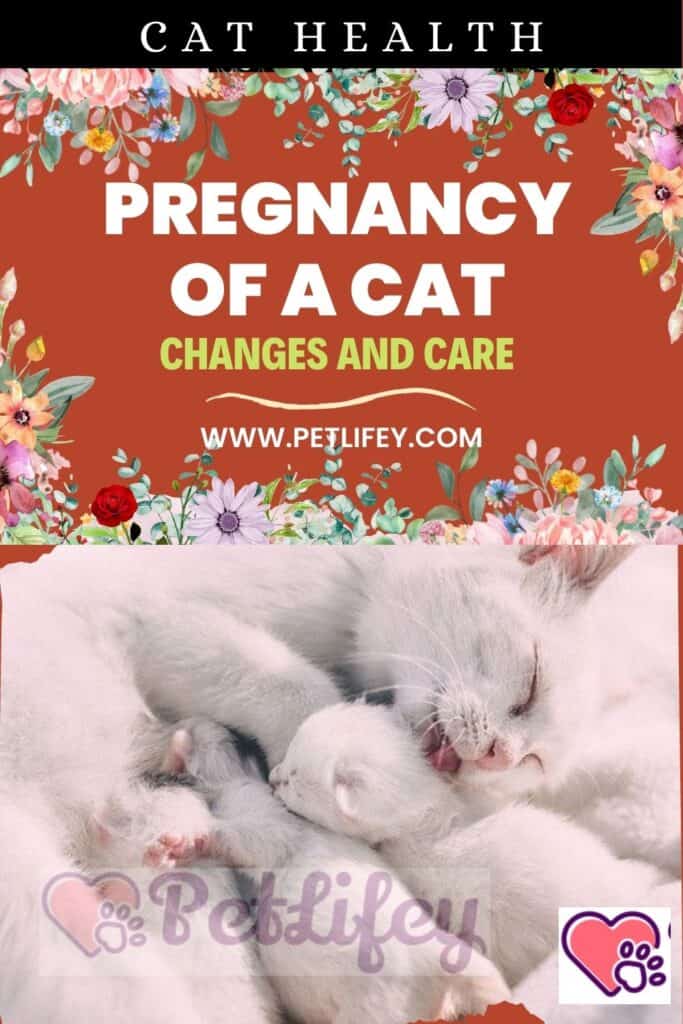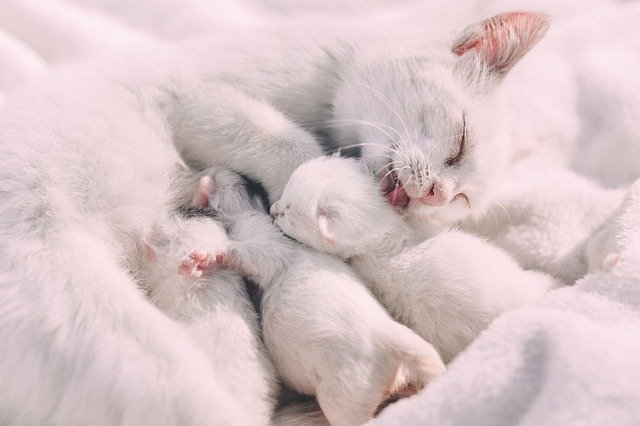
The pregnancy of a cat is about 58 to 66 days. We want to explain to you in this article, the stages that the cat experiences from when the cat becomes pregnant, until her kittens are born and the changes that they entail for her.
Stay with us on this beautiful tour, we started.
Duration of a cat’s pregnancy
After mating, which is a sometimes painful process for the cat, the sperm reach the ovum, where fertilization begins and a gestation process that will last between 63 and 68 days.
The fertilized egg will give way to a series of divisions, forming an immense cell replication, which will give rise to the embryo of the future kittens.
After 5 days from the fertilization of the ovum, the embryo begins a slow journey to the uterus of our protagonist cat.
Once it reaches the uterus on the tenth day of pregnancy, it will attach itself to its walls to continue its development.
How to know if a cat is pregnant
Our cat is restless, she is more affectionate than normal and looks for us, it has been a long time since she came to sleep next to you, but now she has done it again.
One of the first changes that you can easily detect is that the nipples begin to swell and take on a darker tone than normal.
Your tummy is now showing a little plump. In general, the hormonal change produces alterations in behaviour and may be accompanied by occasional vomiting.
In other cases, the cat may be surly and even spend more time alone. You must observe these changes, and seek special care.
In general, the hormonal change produces alterations in behaviour. Each cat reacts differently to these changes.
Some cats will seek the closeness of the family member to whom they have the most confidence. In other cases it may be the opposite and it will be lonely, looking for places in the house to be more calm.
During the cat’s gestation period, it is recommended that she have a diet as balanced as possible and rich in high-quality protein.
In some cases it can be supplemented with an extra vitamin supplements, but this is best consulted with the veterinarian.
Make sure that the food you are providing meets all the nutritional needs and adapted to the gestation period.
Reaching the end of a cat’s pregnancy
When the moment of giving birth approaches, the cat will be somewhat nervous, more active than normal.
You will possibly notice that she can eat less and meow more than usual. Your breasts will be swollen as the milk begins to accumulate.
When it is time to deliver, the sounds and meows may increase. The kittens that start to come out, will have their small placenta and if it does not rupture, the mother will take care of it.
The attention at those times by the cat, towards her young, is maximum and will spend a lot of time with them and provide them with the lactation and warmth they need in the first days.
Labor can usually last between 10 minutes and half an hour and the cat will give birth between 1 and 8 kittens. Sometimes labor can last for several hours.
When the little kittens begin to move, instinct will make them look for the mother’s nipples, to feed and suckle.
Unwanted pregnancies in a cat

Despite the fact that the birth of these kittens is always something beautiful, if they are cats that can provide them with a future with all the attention they deserve, the truth is that if they are strays, they are condemned to a hard life, with a greatly reduced life expectancy.
To suffer diseases, be attacked or run over, or even die from poisoning or from a bad diet.
Protectors and animal associations that live the day-to-day reality and the problem of adoptions, advise to assess these compelling reasons when making the decision to sterilize a cat .
Avoid the suffering of many cats, who will not be able to get ahead safely.
But we also have to take into account the positive effects on the health of females when sterilizing them.
Breast cancer, one of the most common in cats, is greatly reduced. Cancer of the uterus, ovaries, or cervix, which are less common, also declines.






